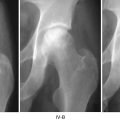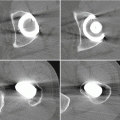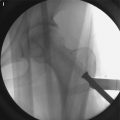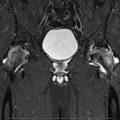Variables
All patients (n = 1,502)
Stratified by gendera
Stratified by age (years) at diagnosisa
Male (n = 885)
Female (n = 612)
<40 (n = 548)
40–64 (n = 706)
≥65 (n = 153)
n (%)
n (%)
n (%)
n (%)
n (%)
n (%)
Systemic steroid administration
760
(51)
295
(34)
462
(76)
325
(60)
340
(48)
58
(38)
Habitual alcohol use
456
(31)
415
(47)
39
(6)
146
(27)
253
(36)
26
(17)
Both
47
(3)
39
(4)
8
(1)
16
(3)
24
(3)
6
(4)
Neither
225
(15)
127
(15)
98
(16)
59
(11)
85
(12)
62
(41)
Unknown/not filled-in
14
9
5
2
4
1
Although frequency of alcohol-induced ONFH among all ONFH patients is likely to be described among study participants in clinical studies that evaluated outcomes of operative or therapeutic procedures, this is not always the case. Even when described, the frequency varied across the studies. For example, with respect to several recent reports, the proportion1 was 27/52 patients (52 %) [10], 6/23 patients (26 %) [11], 5/28 patients (18 %) [12], 18/80 patients (23 %) [13], 1/19 patients (5 %) [14], 37/100 patients (37 %) [15], 26/32 patients (81 %) [16], 16/42 hips (38 %) [17], and 11/71 hips (15 %) [18]. In addition to differences in ethnicity, diagnostic criteria, and definitions for eligibility and exclusion in each study, no universal definition regarding alcohol-induced ONFH explains the different frequencies among studies. Some studies defined alcohol-induced ONFH as having a history of greater than 400 mL of pure ethanol consumption per week [16] or equivalent consumption for at least 6 months [10]. However, even less alcohol consumption might increase the risk of ONFH, because a threshold of alcohol consumption for alcohol-induced ONFH is unknown, and the causal mechanisms of alcohol intake have not been fully proven.
13.3 Analytic Epidemiology of Alcohol-Induced ONFH
13.3.1 Alcohol Consumption as a Risk Factor for ONFH
Although cohort, case-control, and cross-sectional studies can all be used to determine the factors associated with ONFH, the case-control approach is particularly suited to evaluate alcohol intake as a risk factor for development of ONFH. Possible reasons for this are that ONFH is an uncommon disease, and it is crucial to obtain a detailed history of alcohol consumption in each subject. Several hospital-based case-control studies have been reported from Japan [19–22]. In all studies, patients with ONFH without a history of systemic steroid treatment and control patients were recruited at departments of orthopedic surgery.
A case-control study by Matsuo et al. recruited 112 cases with ONFH and 168 controls from 4 collaborating hospitals in Western Japan [19]. Later, Hirota et al. reported results from another case-control study in which 118 cases and 236 controls were recruited from 20 collaborating hospitals all over Japan [20]. These two studies are highly comparable with respect to case definition, control selection, matching conditions between cases and controls (gender, age, ethnicity, date of initial examination/diagnosis, and hospital), and statistical analysis. According to the results by Hirota et al. [20], the odds ratios (ORs) of former, occasional, and regular drinkers were 1.0, 3.2, and 13.1, respectively, compared to never drinkers (trend p < 0.001). Likewise, elevated ORs with a clear dose–response relationship were observed with respect to weekly ethanol consumption (ORs 2.8, 9.4, and 14.8 for <320, 320–799, and ≥800 g/week, respectively, in comparison to nondrinker; trend p < 0.001) and cumulative alcohol consumption (ORs 2.2, 9.7, and 12.9 for <3,200, 3,200–7,999, and ≥8,000 drink-years, respectively, in comparison to never drinker; trend p < 0.001) (Table 13.2). Similar findings were also seen in the earlier study by Matsuo et al. [19]. Later, two case-control studies confirmed the positive association between alcohol intake and ONFH [21, 22].
Table 13.2
Adjusted relative risks of alcohol drinking for ONFH: a case-control study in Japan, 1988–1990
Characteristics | Cases | Controls | Relative oddsa | 95 % CI | ||
|---|---|---|---|---|---|---|
No. | % | No. | % | |||
Alcohol drinking | ||||||
Never | 23 | 19.5 | 87 | 36.9 | 1.0 | |
Former | 4 | 3.4 | 10 | 4.2 | 1.0 | 0.2–6.2 |
Occasional | 26 | 22.0 | 80 | 33.9 | 3.2 | 1.1–9.2 |
Regular | 65 | 55.1 | 59 | 25.0 | 13.1 | 4.1–42.5 |
Trend: p < 0.001 | ||||||
Weekly ethanol intake (g/week) | ||||||
Nondrinker | 27 | 22.9 | 97 | 41.1 | 1.0 | |
<320 | 24 | 20.3 | 87 | 36.9 | 2.8 | 1.0–7.8 |
320–799 | 49 | 41.5 | 45 | 19.1 | 9.4 | 3.0–29.0 |
≥800 | 18 | 15.3 | 7 | 3.0 | 14.8 | 3.8–57.2 |
Trend: p < 0.001 | ||||||
Drink-years | ||||||
Never drank | 23 | 19.7 | 87 | 37.5 | 1.0 | |
<3,200 | 15 | 12.8 | 62 | 26.7 | 2.2 | 0.7–6.9 |
3,200–7,999 | 25 | 21.4 | 36 | 15.5 | 9.7 | 2.6–36.1 |
≥8,000 | 54 | 46.2 | 47 | 20.3 | 12.9 | 3.8–43.4 |
Trend: p < 0.001 | ||||||
Because both current consumption and cumulative consumption were positively associated with ONFH, effects of alcohol on ONFH are likely to be immediate, as well as cumulative [20]. However, detailed pathogenesis for alcohol-induced ONFH has not been well established. Some studies observed morphological changes in the bone marrow of the femoral head among alcohol-treated animals: an induced adipogenesis and decreased osteogenesis [23] and an increased fat cell size and higher bone marrow pressure [24]. These studies also reported an elevated serum cholesterol or triglyceride [23, 24]. Likewise, a recent experimental study in rabbits revealed abnormalities in lipid status both in bone marrow and in blood after intragastric administration of different doses of alcohol. In addition, these abnormalities were more pronounced in rabbits with higher doses of alcohol [25]. An increased level of serum cortisol in patients with alcohol-induced ONFH has been reported as another hematological change [26]. With respect to in vitro studies, suggested mechanisms include nitric oxide-mediated apoptosis of osteoblasts and osteocytes [27] and a decreased ability in osteogenic differentiation of mesenchymal stem cells isolated from the bone marrow [28].
Stay updated, free articles. Join our Telegram channel

Full access? Get Clinical Tree








